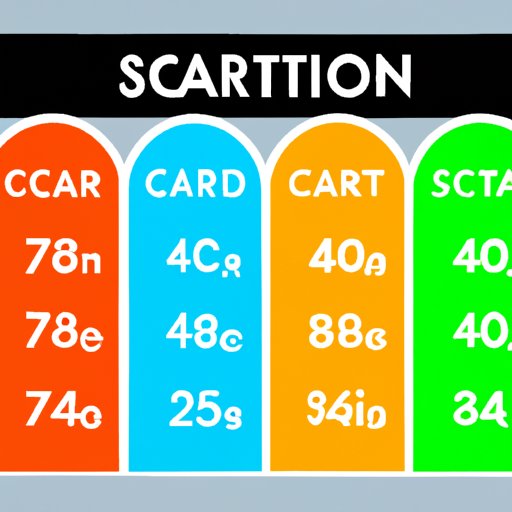Introduction
Have you ever looked at a nutrition label and felt completely overwhelmed by the information presented? Do words like “calories,” “serving size,” and “daily value” leave you scratching your head? If so, you’re not alone. Many people find nutrition labels confusing, but understanding them is essential for making informed food choices. In this article, we’ll demystify nutrition labels and provide practical tips for decoding them like a pro.
Nutrition Labels Demystified: A Beginner’s Guide
Nutrition labels are the small rectangular boxes found on most food items. They provide information about the nutrient content of a food, such as calories, fat, protein, and carbohydrates, as well as vitamins, minerals, and other components. You can usually find them on the back or side of a food package.
One of the most important things to pay attention to on a nutrition label is the serving size. This tells you how much of the food is considered a single serving. Be sure to check how many servings are in a package, as a container may contain multiple servings. This is important because all of the nutrient information on the label is based on a single serving size.
Additionally, you should be aware of the main components of a nutrition label. These include calories, macronutrients (fat, protein, and carbohydrates), fiber, vitamins, and minerals. These elements are essential for maintaining a healthy diet and making informed food choices.
The Top Secrets You Need to Know to Read Nutrition Labels
While nutrition labels provide valuable information, food manufacturers often use tricks to make their products appear healthier than they really are. These tricks include misleading serving sizes, health claims that are technically true but misleading, and others. To read labels more critically, it’s important to spot these tricks and understand how to avoid them.
One of the most common tricks is using a serving size that’s smaller than what most people would eat in a single sitting. For example, a package of cookies may list a serving size of just one cookie, but most people would eat several cookies at once. By making the serving size smaller, the manufacturer can make the calorie and nutrient content seem lower than it really is. When reading nutrition labels, be sure to consider what a realistic serving size would be for you.
Read Between the Lines: How to Decode Nutrition Labels and Make Informed Food Choices
Looking beyond the basic nutrition information on a label can provide valuable insight into a food’s quality. For example, checking the ingredient list can reveal harmful additives or preservatives, while checking for added sugars and artificial ingredients can help you make better food choices. Some additional information, such as “percent daily value” percentages, can also provide helpful context about a food’s nutrient content and potential health benefits.
For example, let’s say you’re comparing two different brands of pasta sauce. Both have similar calorie and macronutrient content, but one lists ingredients like high fructose corn syrup and artificial flavors, while the other contains only natural ingredients like tomato, basil, and garlic. By looking beyond the basic nutrition information and checking the ingredient list, you can make a more informed choice and choose the healthier option.
7 Tips for Decoding Nutrition Labels Like a Pro!
Here are seven practical tips for reading nutrition labels like a pro:
- Start with the serving size and number of servings per container.
- Check the calorie content and compare it to your daily needs.
- Look for foods with high nutrient density, meaning they provide a lot of essential nutrients for relatively few calories.
- Watch out for added sugars, high amounts of sodium, and trans fats.
- Check the ingredient list for harmful additives and preservatives. Look for foods with a short and simple ingredient list.
- Consider the “percent daily value” percentages of key nutrients, such as fiber and vitamins.
- Choose whole, unprocessed foods whenever possible.
A Step-by-Step Guide to Understanding Nutrition Facts
To make it easier to understand how to read a nutrition label, let’s walk through an example. We’ll use a can of black beans as our food product.

Image source: U.S. Food and Drug Administration
1. Start with the serving size and number of servings per container: In this example, the serving size is 1/2 cup and there are about 3.5 servings in a can.
2. Check the calorie content: One serving contains 110 calories.
3. Look for macronutrients: One serving contains 0g fat, 20g carbohydrates, and 7g protein.
4. Check for fiber and vitamins: One serving provides 25% of your daily recommended value for fiber and 10% of your daily recommended value for iron.
5. Consider the ingredient list: The ingredient list contains only black beans, water, and salt, making this a healthy and natural option.
Discover the Hidden Truth Behind the Nutrition Label
In addition to the basic nutrient information, nutrition labels also contain valuable information about the vitamin and mineral content of a food. For example, you can use the label to check for iron, calcium, and other essential nutrients. Additionally, the “percent daily value” percentages can provide a quick snapshot of how a food fits into your overall diet. By looking beyond the surface-level information on a nutrition label, you can make informed choices about the foods you eat.
Conclusion
Reading nutrition labels is an essential part of making informed food choices and maintaining a healthy diet. By understanding what nutrition labels are, how to read them, and what to look for, you can make smart choices that nourish your body. Don’t be intimidated by these seemingly complicated labels; with a little bit of practice, you’ll be reading nutrition labels like a pro in no time.
For additional resources, be sure to check out the U.S. Food and Drug Administration’s guide to understanding nutrition labels and nutrition education resources.
